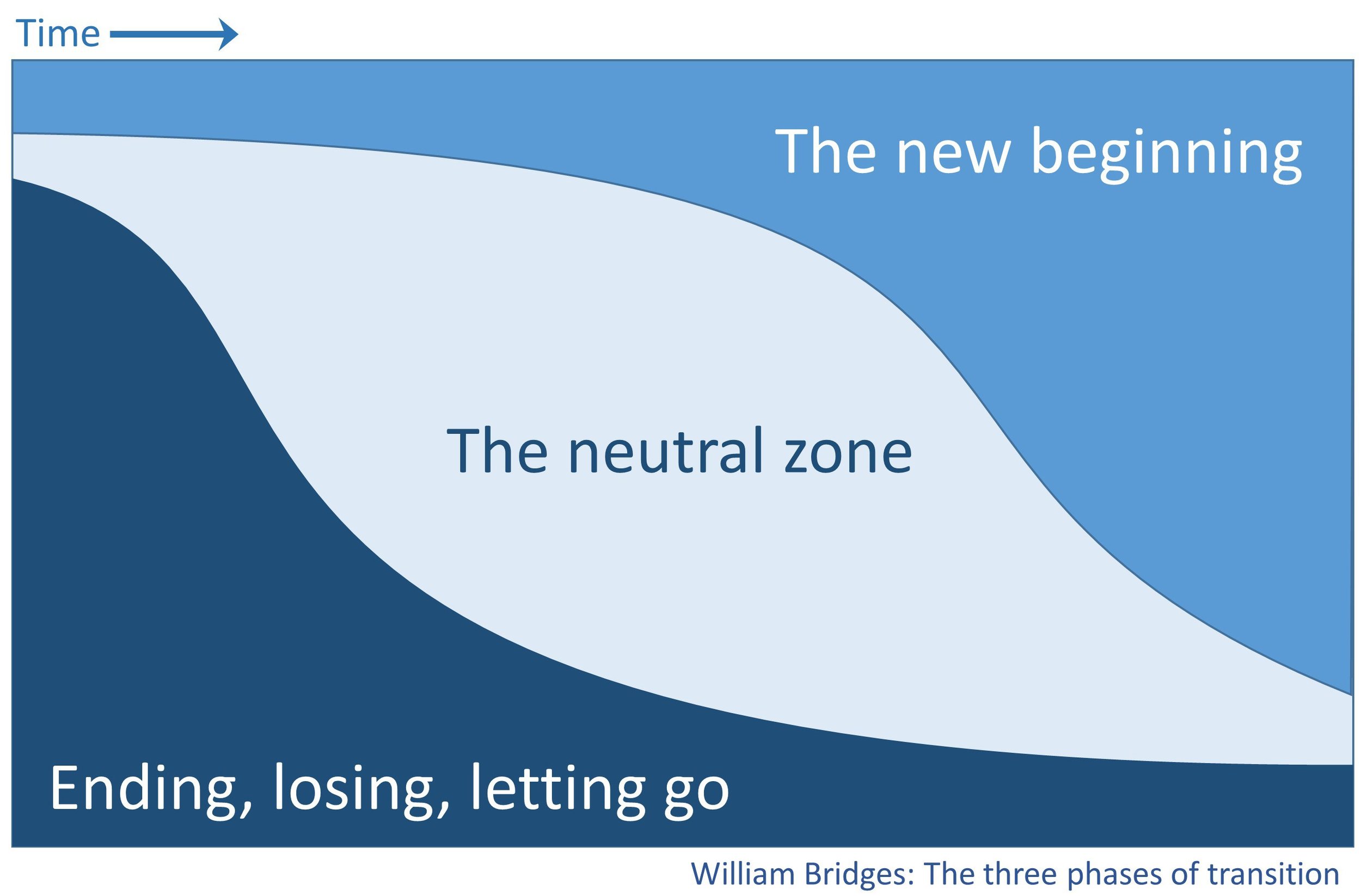The 3 stages of transition explained
With a helpful tip for navigating each stage
Change is part of life’s journey. Sometimes we choose it, like buying a new car and at other times we just have to accept it, such as the end of a relationship or a new diet due to health issues.
Though these changes are external to us, we process them internally. Feelings of anger, grief or denial are synonymous with change, especially when it’s unwanted. Even excitement can shift to anxiety when something we’ve worked for finally happens.
If these feelings aren’t acknowledged or remain unaddressed, it can lead to resistance to the change and undesirable outcomes.
The psychological and emotional adjustments people move through in times of change are known as ‘transition’. Theorist William Bridges refers to 3 key stages of transition which, though distinct, can overlap. These are ‘endings’, the ‘neutral zone’ and ‘beginnings’.
Though the change itself can happen quickly, the transition generally occurs more slowly. And no matter how prepared we think we are for change, we all go on this journey.
But the good news is, these transition stages don’t need to be long or difficult. With the right support, they can be navigated smoothly and speedily.
When onboarding a new executive, it’s critical to develop a support framework with these stages in mind, particularly as almost half of senior transitions fail within two years, according to McKinsey and Company.
So, to give your new hire the best chance of success, here are the 3 stages of transition explained, along with practical tips from the Lucent Transition Day toolkit, to help along the way.
Endings
This is a time of high emotion and mixed feelings. Amid the anticipation of new possibilities, there’s often a sense of loss and discomfort. The rules have changed and familiar colleagues are no longer around for support. It’s tempting to hold on to people and strategies that have worked before.
The tip here is to normalise these emotions for your new hire and create a safe space for them to acknowledge their turmoil.
This stage requires leaders to display empathy and to offer support. However, their hiring manager, new peers or team are not the best ears to bend with feelings of doubt and confusion.
Consider providing a coach or other external support person to act as the ‘cone of silence’ for your new starter to vent or reflect on their emotions.
A coach can help them to identify their stress responses and derailing behaviours, which if left unchecked, may send them off track.
Neutral Zone
This part of the process is characterised by uncertainty and ambiguity. Facing a mountain of information and challenging goals, anxiety and overwhelm are common. A new hire may appear disorientated and resistant to their environment as they struggle to find a way through.
That said, this emotional discord can lead to innovative and creative breakthroughs. With the right support, the neutral zone can become a time of reflection and learning.
Your tip is to supply as much clarity and certainty as possible, so your new hire experiences insight and growth and not altitude sickness when scaling the steep learning curve.
Facilitate structured conversations with their hiring manager and encourage the leader to be clear about expectations and goals. A shared understanding of priorities and guidance on direction provide critical footholds for the executive’s successful transition.
Ask about their day-to-day experiences at work and pay particular attention to whether they match the stated company values and culture.
Help your new hire to identify and build support networks. These relationships are essential to their assimilation and their grasp of politics and assist them to avoid cultural trip hazards.
Beginnings
The final stage of transition is all about forward momentum. It’s a time for planning, visualising the end goal and achieving some early wins along the way. While blips in confidence may still occur, there’s a growing sense of stability and comfort.
The tip for this stage is to provide your new starter with robust planning tools and resources to stress test their plans and ideas. A flexible and focused 30-60-90 day plan, with a set of well-defined goals and key success indicators, provides a clear pathway for them to follow.
The structured stop-off points allow the new starter to check they’re still heading in the right direction, and you can assess performance and offer further support if needed.
An executive in transition is experiencing many conflicting emotions. By following these tips, you’ll help to move them swiftly through each stage with confidence and purpose.
For more information on how Lucent Transition Days can help your new hire transition into their role, email or book a call with me and sign up for our newsletter for more successful executive transition insights.





